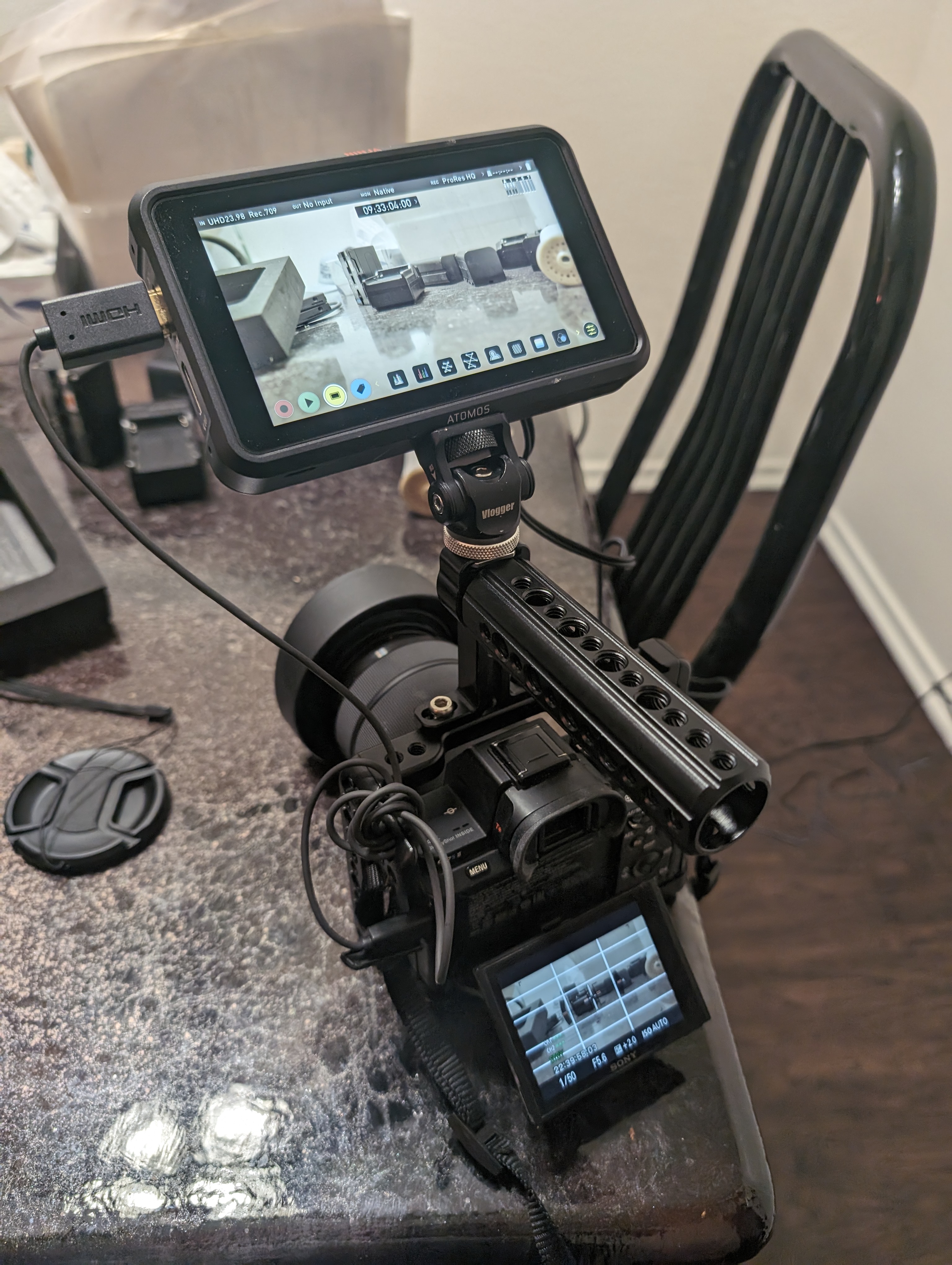What I did wrong on a Sony film set
Earlier in the month, I acquired an upgrade to my photography/videography gear: a Sony a7sii. In addition, the Atomos Ninja V monitor and recorder. A very humble, entry-level start to professional filmmaking.
A few days later, I called up a buddy who I’ve worked with before as his audio engineer and asked if he had any gigs I could tag along with. He mentioned his upcoming role as the director of photography on a Sony film (which I cannot disclose unfortunately), and a week later, we find ourselves on-set. I would be filming BTS and shooting stills.
Prior experience only got me so far as to understanding the terminology and the basic technicalities of professional filmmaking. This would be the first time I would be on-set as part of a crew. Let me tell you, there was a lot to learn on that set, personally. Now, I believe I should give myself some grace as this was my first time on a professional film set much less actual filmmaking in general, but there were a few things I should have forecasted myself while preparing for the shoot.
Mistakes I learned from as a newbie
The crew set up shop at an airport. I unpacked and rigged my little camera in a little corner, out of the way for the cinematographer and DP who had their grand rig. We carried many cases in just for camera gear; a few for the prime lenses, a DJI Ronin, Atomos Shinobi, C300, and more. While we weren’t shooting, I filled my role as a PA (production assistant) while the AC (assistant camera) rigged up the C300 for the DP (director of photography).
Power
During prep, I laid out my NPF charger just in case and topped off whatever batteries I had. I figured my Sony body batteries would be eaten up quick since I did not have any central power system such as a V-mount pack and these batteries were tiny. I grabbed a few full ones and threw them in my back pocket. One NPF battery went on the Ninja V and we went to go shoot. A couple hours, my camera was still going strong on power while the Ninja V had already eaten through its NPF. It made sense, the Ninja V was doing heavy work recording at 4k while the camera was just reading out its sensor and sending it to the Ninja. After a scene was over and the actors went back to reset, I ran back to grab a few extra NPF batteries to get me through the next scene.
Investing in a V-mount system should be next on my list if I were to continue doing gigs like this. It was a struggle staying with the crew if my power system was not keeping up. Thankfully, I was still able to get some stills while the Ninja V was off. Somewhat embarassing, but I’m glad I still made it work.
Encoding
With the Ninja V, it gave me the ability to shoot 4k30p at 8bit 4:2:2 (limitation of the camera) which is on par with average film formats. I wanted to make sure I gave production good quality image data for the post team down the line. Storage was just perfect. The night before, I stopped at Walmart and grabbed a Western Digital 1TB SATA SSD. I think Atomos having their main storage as SATA is awesome, didn’t need a CFExpress card or high-end, Class 10 whatever SD card. The reason I recorded on the Ninja V was because I was not quite happy with the camera’s internal recording (I did some test shots prior to the shooting). I had the Ninja set to 4k30p ProRes 4:2:2 shooting in SLog3 and ended up with almost 200GB of footage at the end of the day (thankfully Google One is cheap).
Later, after the set, the director, DP, and I went to dinner and talked about how the shoot went. The DP mentioned he only shot in 1080p and I realized I may went overboard with a more than necessary recording format. Sure, probably not a big deal, but a few reasons why I don’t like this:
- Recording at a lower resolution probably would’ve saved more power for the Ninja V. Less pixels/data, less to process, less power draw.
- Uploading/downloading the footage would take less time for both me and the director.
Audio
I feel like this one was overall hard to control, I didn’t quite have enough gear to make this work properly and the situation made it more difficult. Our location was outdoors most of the shoot and it was extremely gusty out on the airstrip. My audio setup was a Rode shotgun mic mounted on my camera cage’s cold shoe. Even with the wind shield attached, I could hear so much clipping while monitoring the Ninja. I believe some of the footage with audio can be salvaged where we were shielded by the wind or when the wind calmed down.
Conclusion
Couldn’t ask for a better crew at the end of the day. And if you asked everyone else, they would say the same. There is truth in what the director said when he repeatedly mentions there were some things we could’ve done better. After all, nobody ever stops learning and he believes that full-heartedly. Yet, at the same time, you could absolutely see his appreciation and gratitude for the hard work and skill the crew showed on set. It was an awesome first experience.
I got home, popped in the SSD, and checked out the footage. I thought it looked great. Exposure was consistent and I was happy with the framing. Uploaded it to my Google Drive and sent it off to Sony. Overall, a great learning experience, will definitely look forward to future opportunities.
